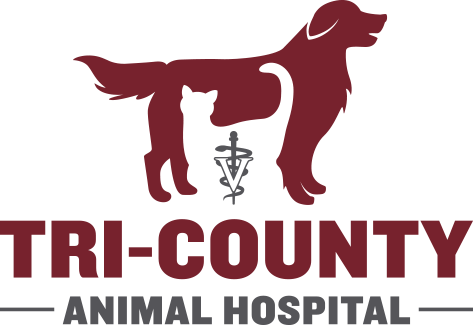Acetaminophen Toxicity in Cats
Acetaminophen Toxicity in Cats – Overview
- Results from owners overdosing the cat with over-the-counter medications containing acetaminophen, a medication intended to control pain or fever in humans
Genetics
- Cats—genetic deficiency in a pathway that breaks down or changes (metabolizes) drugs in the liver (known as the “glucuronide conjugation pathway”); makes cats vulnerable to acetaminophen toxicity
Affects
- Cats
- Dogs
- Most common drug toxicity in cats; considerably less frequent in dogs
- Young and small dogs and cats—greater risk from owner-given single-dose acetaminophen medications
Signs/Observed Changes in the Pet
- May develop 1–4 hours after dosing
- Progressive depression
- Rapid breathing
- Darkened mucous membranes (moist tissues of body, such as gums)
- Drooling (salivation)
- Vomiting
- Abdominal pain
- Rapid breathing (known as “tachypnea”) and bluish discoloration of skin and moist tissues of body (known as “cyanosis”) due to a abnormal compound (methemoglobin) in the blood (condition known as “methemoglobinemia”) that disrupts the ability of the red blood cells to carry oxygen to the body
- Fluid buildup (edema)—face, paws, and possibly forelimbs; after several hours
- Chocolate-colored urine due to the presence of blood in the urine (known as “hematuria”) and the presence of methemoglobin in the urine (known as “methemoglobinuria”); especially in cats
- Death
Causes
- Acetaminophen overdosing
Treatment for Acetaminophen Toxicity in Feline Health Care
- With methemoglobinemia (abnormal compound [methemoglobin] in the blood that disrupts the ability of the red blood cells to carry oxygen to the body)—must evaluate promptly; inpatient care
- With dark or bloody urine or yellowish discoloration of skin and moist tissues of the body (known as “jaundice” or “icterus”)—inpatient care
- Gentle handling—imperative for clinically affected pets
- The veterinarian will induce vomiting (known as “emesis”) and may perform flushing of the stomach (known as “gastric lavage”)—useful within 4–6 hours of ingestion of acetaminophen
- Low red blood cell count (known as “anemia”), blood in the urine (hematuria), or presence of hemoglobin in the urine (known as “hemoglobinuria”)—may require whole blood transfusion
- Fluid therapy to maintain hydration and electrolyte balance
- Drinking water should be available at all times
Activity
- Restricted
Diet
- Food—offered 24 hours after initiation of treatment
Medications for Acetaminophen Toxicity in Cats
- Medications presented in this section are intended to provide general information about possible treatment. The treatment for a particular condition may evolve as medical advances are made; therefore, the medications should not be considered as all inclusive
- Activated charcoal—administered immediately after the animal veterinarian has induced vomiting or flushed the stomach (gastric lavage) and after vomiting is controlled; activated charcoal is used to attract and keep the remaining acetaminophen in the gastrointestinal tract
- N-acetylcysteine (Mucomyst®) is administered; considered to be an antidote for acetaminophen toxicity
- Other sulfur donor drugs—if N-acetylcysteine not available; sodium sulfate
- 1% methylene blue solution—combats methemoglobinemia without inducing red blood cell destruction (known as a “hemolytic crisis”)
- Ascorbic acid—slowly reduces methemoglobinemia
Follow-Up Care Patient Monitoring
- Continual clinical monitoring of methemoglobinemia (abnormal compound [methemoglobin] in the blood that disrupts the ability of the red blood cells to carry oxygen to the body)
- Serum liver enzyme activities to monitor liver damage
- Blood glutathione level—provide evidence of the effectiveness of therapy
Preventions and Avoidance
- Never give acetaminophen to cats
- Give careful attention to acetaminophen dose in dogs; acetaminophen should only be given to dogs under a veterinarian’s supervision
Possible Complications
- Liver damage and resulting scarring (fibrosis)—may compromise long-term liver function in recovered pets
Expected Course and Prognosis
- Rapidly progressive methemoglobinemia (abnormal compound [methemoglobin] in the blood that disrupts the ability of the red blood cells to carry oxygen to the body)—serious sign
- Methemoglobin concentrations greater than 50%—grave prognosis
- Progressively rising serum liver enzymes 12–24 hours after ingestion—serious concern
- Expect clinical signs to persist 12–48 hours; death owing to methemoglobinemia possible at any time
- Dogs and cats receiving prompt treatment that reverses methemoglobinemia and prevents excessive liver damage may recover fully
- Dogs—death as a result of liver damage may occur in a few days
- Cats—death as a result of methemoglobinemia occurs 18–36 hours after ingestion
Key Points
- Never give acetaminophen to cats
- Acetaminophen should only be given to dogs under a veterinarian’s supervision
- Most common drug toxicity in cats; considerably less frequent in dogs
- Treatment in clinically affected pets may be prolonged and expensive
- Pets with liver injury may require prolonged and costly management
